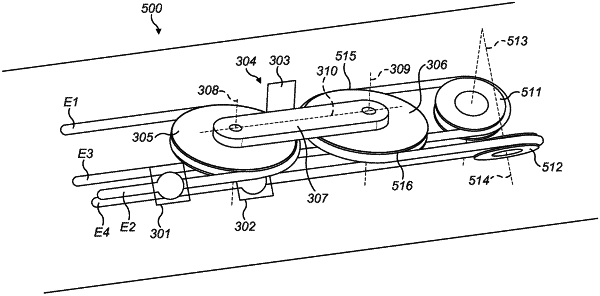| CPC A61B 34/71 (2016.02) [A61B 34/30 (2016.02); B25J 15/0233 (2013.01); A61B 2017/2938 (2013.01); A61B 2034/715 (2016.02)] | 20 Claims |

|
1. A robotic surgical instrument comprising:
a shaft;
an articulation attached to the distal end of the shaft, the articulation comprising a plurality of joints configured to articulate an end effector, the plurality of joints driveable by at least first and second pairs of driving elements; and
a driving mechanism at the proximal end of the shaft, the driving mechanism comprising:
a pulley arrangement comprising first and second pulleys attached together such that their separation is fixed, wherein the first pair of driving elements is constrained to move around the first pulley, and the second pair of driving elements is constrained to move around the second pulley;
third and fourth pulleys around which the second pair of driving elements is further constrained to move, wherein the third and fourth pulleys are mounted such that their pulley axes are non-parallel and non-perpendicular to the pulley axes of the of the first and second pulleys; and
a pulley drive configured to displace the pulley arrangement, such that a displacement in one direction causes the first pair of driving elements to be tensioned and the second pair of driving elements to be de-tensioned, and a displacement in an opposing direction causes the second pair of driving elements to be tensioned and the first pair of driving elements to be de-tensioned.
|